Traditions of the Japanese people. Japanese culture.
Japan is a very interesting state, known for a wide variety of traditions and customs. Geographical position The country of the Rising Sun made it somewhat isolated from other states, thanks to which it developed without regard to European countries. The culture of Japan is extremely rich and diverse. Peculiar Japanese traditions formed under the influence of historically important events. Gradually, Japan turned into a powerful, cohesive state with characteristic features and a certain mentality of the population.
Main aspects of Japanese culture
The culture of the country is manifested in many spheres of society. In Japan, its aspects are;
The process of drinking tea for the Japanese is not a simple satisfaction of the physiological needs of the body, but a real cult. The tea ceremony in Japan is accompanied by special attributes and contains a lot of traditions. Such a reverent attitude, it would seem, to the everyday process took its development from the meditation of Buddhist monks. It was they who brought so much significance to the process of tea drinking.
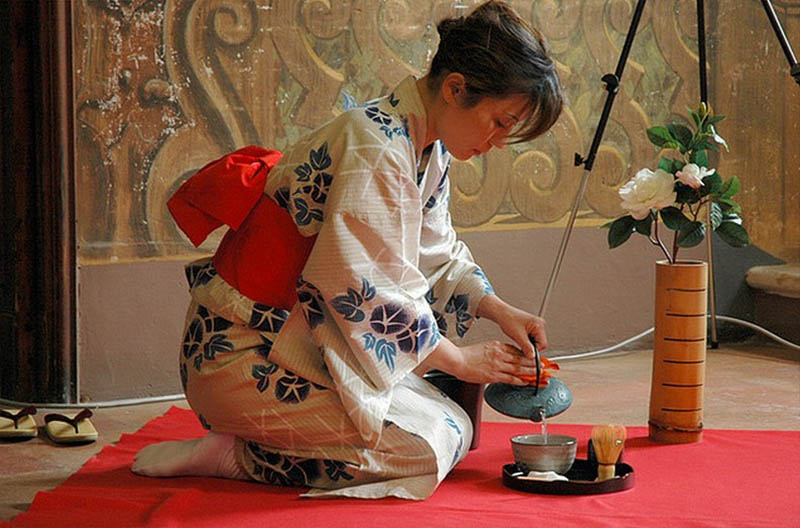
For Europeans, the concept of "kimono" characterizes national clothes Japan. However, within the country rising sun There are two meanings of this word - in the narrow and broad senses. The word "kimono" in Japan means not only National Costume but also all clothing in general. Under the kimono, as a rule, a special robe and seven belts are worn. A kimono worn in summer is called a yukata. Depending on the age of the woman, the model of attire may also vary.

In Japan, two religious movements are successfully preached at once - Shintoism and Buddhism. Shintoism appeared in ancient Japan, it is based on the worship of various creatures. Buddhism, in turn, is divided into several varieties. In Japan, there are many schools promoting one or another trend of Buddhism.

Rock gardens are of particular importance in the culture of Japan. They are not only an architectural creation that attracts the attention of tourists, but also a place of spiritual growth. Here the Japanese find enlightenment from the contemplation of arranged in a special order stone structures. The rock gardens include a specific plan, which only an enlightened person can unravel.
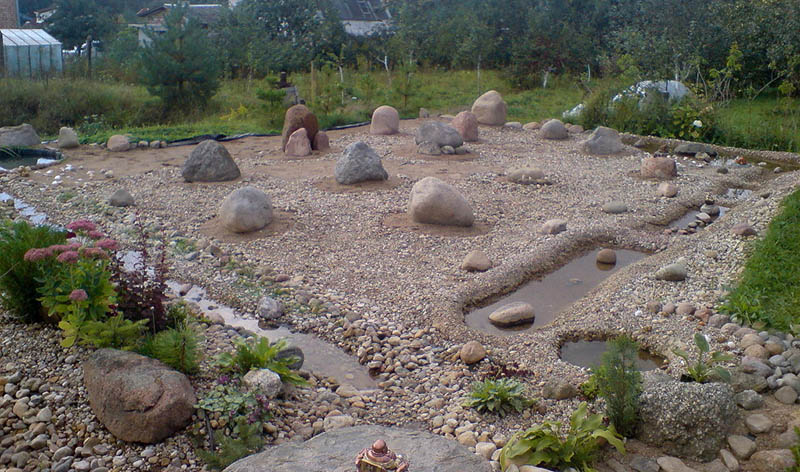
Tango no sekku is a celebration in honor of the boys. It is dedicated not just to all small male representatives, but also to the masculinity and strength of everything. Japanese people. It is customary to celebrate the holiday in spring, when nature wakes up and pleases with its beauty. On the day of tango no sekku, the boys are taken care of by their parents. The father must tell his son about all the Japanese warriors and their exploits. And his mother sets the table for him with delicious food.

Cherry blossom is considered the most beautiful natural phenomenon. Many tourists come here just to enjoy the contemplation of a flowering plant. In the spring, a large crowd of people can be observed in the parks of Japan. Many families go on picnics and watch the beauty of the Japanese cherry tree.
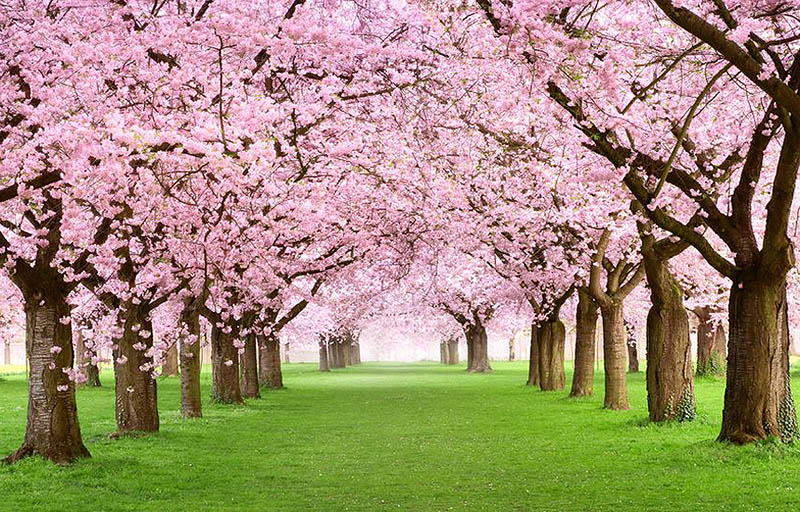
Bows can be attributed to the peculiar traditions of the country. They represent the rules of good manners. It is not customary for the Japanese to say goodbye, instead they bow as many times as the interlocutor did.

Samurai represent a certain class of society that has developed under the influence of traditions and customs. It has a direct connection with the culture of the country. Samurai are warriors who carry out a certain service, which can be both military, security or household. In any of these cases, samurai personify the courage, masculinity and nobility of the Japanese people.

The process of formation of the culture of ancient Japan
culture ancient japan began to develop with the birth of the Japanese language and writing. The land of the rising sun borrowed the basis for this from China. Japanese writing also contains hieroglyphs, to understand which foreign citizen will be ineffective. Over time, new words, sounds and phrases began to be added to the Japanese language. So he completely transformed, however common features with China are still traceable.
The religiosity of the country also originates from ancient ages. Shintoism was a consequence of the development of various mythologies. On this moment this teaching promotes the cult of leaders and dead people. Buddhism, on the other hand, has such deep roots that the opinions of scientists and historians about the emergence of this type of religion vary greatly.

Japanese art
Almost all types of art practiced in Japan carry one main idea - calmness and relaxation. It is precisely the harmony of a person with himself that contains art, regardless of the way information is presented. Many art forms known all over the world began their development in Japan. Among them, origami can be distinguished - the ability to fold various shapes from paper.
Ikebana has become another popular part of Japanese art. This is a skill to form bouquets of flowers using a special technology. From here came an equally popular activity, which is called bonsai. This is the creation of a variety of compositions from dwarf trees. In Omiya, not far from Tokyo, there is a whole Bonsai park. Each dwarf tree presented here is unique and beautiful in its own way.
Paintings of Japan will deserve special significance, since each painting carries a hidden meaning. As a design, as a rule, bright colors, contrasting transitions and clear lines are used. Japan also has the art of calligraphy. This is the skill of aesthetically beautiful writing of hieroglyphs. Applied art is also widespread in Japan. There is a whole museum in Tokyo dedicated to this craft. Here you can see products made of paper, glass or metal. And it's far from complete list materials used for this purpose.
The Japanese style of interior design also deserves special attention. It includes functionality and simplicity, along with originality of performance. In addition, interior design carries a religious philosophy, like any other form of Japanese art.

Japanese architecture
Architectural structures in Japan, in one way or another, are associated with religion. Temple buildings at first, most often, were devoid of any flowers. This was due to the use of unpainted wood in construction. Later they began to use red and blue shades.
The main material for architectural buildings in Japan it is considered a tree. This is due to the fact that the stock of this resource in the country is quite large. In addition to the fact that the tree conducts heat well and absorbs moisture, it is also practical during earthquakes, which occur quite often in Japan. If a stone house is very difficult to recreate after destruction, then a wooden one is much easier.
The main feature in the architecture of Japan is the presence of even geometric shapes. Most often, these are triangles and rectangles. It is almost impossible to meet smoothness and roundness of lines in any structure. The main principle, based on which the Japanese equip their homes, is the inseparable existence of the inside of the house and the outside. This applies to Japanese gardens. They should be decorated in exactly the same style as the house itself. Otherwise, it is considered bad taste and complete bad taste. The Japanese pay special attention to their gardens.

Japanese music
In terms of musical development, Japan looked to other countries, using any musical instruments. But later she modernized them under the influence of local tastes and traditions. First influenced the formation classical music In Japan, the local Dengaku folklore, mixed with foreign influences, gave birth to the music that is now familiar to Japan.
The religious side of the issue also contributed to the musical origin. Thanks to Christianity, organ playing began to spread. And Buddhism promoted playing the flute.
At present, classical music has gained popularity in Japan. Many members of this cell of creativity travel outside of Japan. These include Goto Midori, Ozawa Seiji and Uchida Mitsuko. Relatively recently, halls designed for comfortable listening to classical music were opened in Japan. These include Kiyo Hall, Osaka Symphony Hall, Orchard, etc.

Household traditions of Japan
The Japanese are a well-mannered people, observing their traditions and customs. Respect for yourself and others in Japan is considered the norm. From childhood, children are taught the norms of good manners, explain to them the basic values of the Japanese people, and enlighten them in every possible way. And it's all for the benefit of society. Any tourist who comes to the Land of the Rising Sun from another country is surprised at how friendly, friendly and well-mannered the Japanese are.
Unlike European countries Japan has long banned smoking in public places. This also applies to private property. Smoking near other people is allowed only if they have given their consent.
Among other things, the Japanese strictly observe all the rules of hygiene that society dictates to them. For example, in any room, including religious buildings, there are special straw mats. You can’t walk on them in shoes, they are considered not only an interior decoration, but also a real sacrilege. Also, the Japanese decided to protect themselves from possible bacteria that they bring from the toilet on their feet. In any public place and in apartments there are special slippers for the toilet, which do not allow the transfer of harmful germs to other rooms.
Eating for the Japanese is not considered a process of life, but a real cult. Before eating, the Japanese always wipe their hands with a special towel soaked in water, which is called oshibori. Table setting does not occur randomly, but according to a special scheme. Even each device has its own place. The Japanese divide them into male and female, and this is very important for them. Spoons in Japan are used only for eating o-zoni soup, which is cooked on New Year, the rest of the first courses, the Japanese prefer to drink exclusively from special bowls. Moreover, smacking your lips during a meal is not considered bad form. It is believed that in this way the taste of the dish is better revealed.
The relevance of good form in Japan is proved by the presence of the following rules:
- It is necessary to discuss the place and time of the meeting in advance. Being late in Japan is considered impudent and beyond the bounds of decency.
- You can not interrupt the interlocutor, you need to patiently wait for the person to speak out, then begin to express his opinion.
- If you call the wrong number, you need to apologize.
- If someone came to your aid, then you definitely need to thank him.
- Some guests of the Japanese can be considered honorary. They even allocate special place at the table, which, as a rule, is the most extreme from the entrance to the room.
- When giving a gift to the Japanese, one should apologize for being humble despite what it is. Those are the rules, you shouldn't break them.
- Sitting at the dinner table, men can cross their legs, while women are strictly forbidden to do this. Legs should be tucked in and pointed in one direction. Catherine
Igor Kolesnikov
amazing culture!! so incomprehensible to other peoples and so mysterious
The culture of Japan was formed as a result of a historical process that began with the migration of the ancestors of the Japanese to Japanese islands from the continent and the founding culture of the Jomon era. In the current culture of Japan, the influence of Asian countries (in particular Korea and China) can be traced, North America and Europe.
On culture and worldview Japanese population strongly influenced by the location of the country, climatic features and features of the relief, and in addition, constant natural disasters (earthquakes and tsunamis), which is reflected in the special reverence of the Japanese surrounding nature like a living being. The ability to admire the instant charm of nature is feature Japanese mentality, and reflected in Japanese art.
Japanese language and writing
The Japanese language has always been an important part of Japanese culture. Japanese is an agglutinative language and is distinguished by a difficult concept of writing, which is formed from three different types hieroglyphs - Chinese kanji characters, the alphabet of katakana and hiragana syllables.
Literature of Japan briefly
For a long time, the literature of Japan was influenced by the Chinese empire, and literary works were also written in Chinese.
The first examples of Japanese literature are the collection of Japanese legends and myths "Kojiki" ("Letters on the deeds of antiquity") and historical records "Nihon shoki" ("Annals of Japan written with a brush" or "Nihongi" - "Annals of Japan"), which were created in Nara era (7th - 8th centuries). At the same time, the poetic anthologies Manyoshu (Collection of Myriad Leaves, 759) and Kaifuso were written.
Haiku, waka and tanka types of poetic styles are also popular outside of Japan.
Haiku of the famous Japanese poet Basho: 
Flowers withered.
Seeds are falling, falling
Like tears...
Cinema
At first, in Japan, cinema was considered an unworthy art, there was a dismissive attitude towards people who made films. Cinema became popular only in the late 30s of the 20th century.
In the 50s and 60s of the 20th century, Japanese cinema began to actively develop. This period is called the "golden age" of Japanese cinema. In 1950, 215 films were produced, and in 1960 their number reached 547. At the same time, the genres of political, historical cinema, science fiction and action films were spreading, Japanese cinema was becoming famous all over the world. Famous directors of that time are Akira Kurosawa, Shohei Imamura, Kenji Mizoguchi. Actor Toshiro Mifune, who played in almost all Kurosawa's films, is gaining great popularity outside of Japan.
In the 90s of the last century, director and actor Takeshi Kitano became famous all over the world.
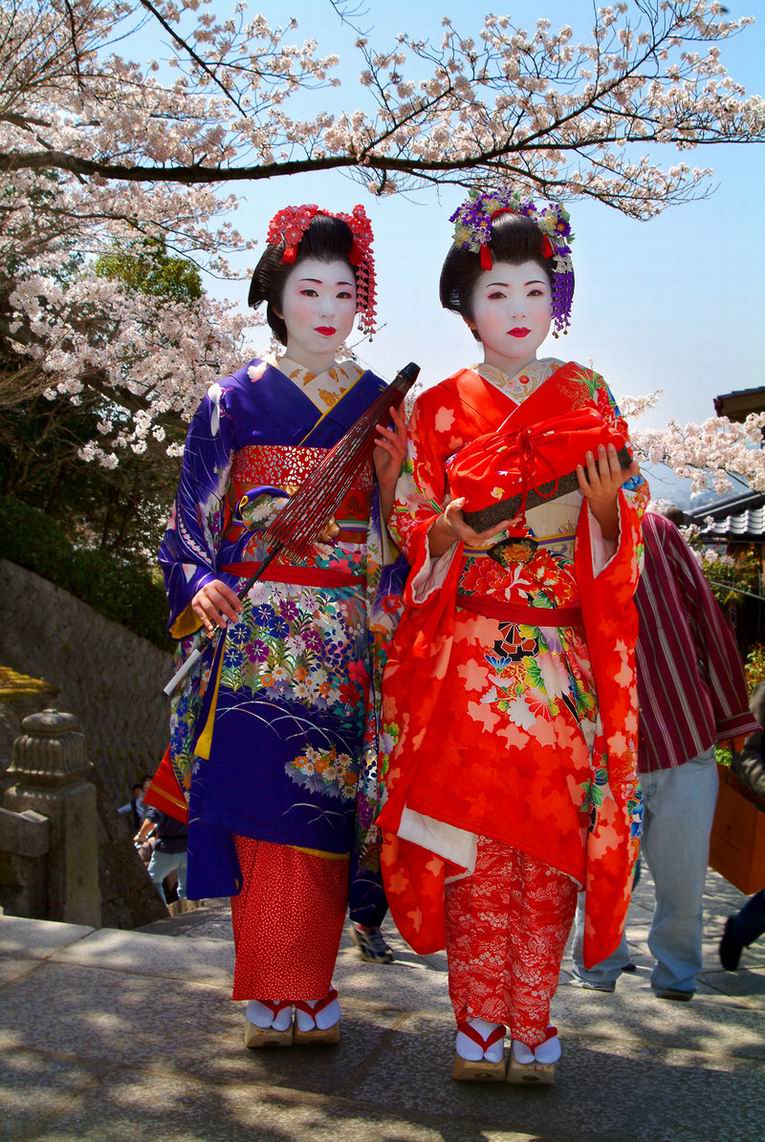 Cloth
Cloth
In Japan, there are two types of clothing - national - wafka, and ordinary European, which is worn in Everyday life. Kimono (translated as "clothes, outfit") - common name any clothing in the broad sense, and in the narrow sense - the form of wafuku.
Yukata - light robe;
hakama—trousers;
geta, waraji - sandals;
obi - belt.
customs, etiquette
Japanese society is characterized by a clearly manifested sense of belonging to a particular social class (family, work team, student group), which also manifests itself in peculiar connections within the community.
In Japan, the concepts of "duty" and "obligation" called giri are of particular importance. Despite the fact that kettlebells are the general social norm of Japanese behavior, in some situations, in particular among young people, kettlebells are not taken so seriously.
In Japan, there are some norms of gestures, and the more restrained a person is, the more respectfully they treat him, so a friendly clapping on the shoulder and pulling the hand in the land of the rising sun will not be welcome.
Theater and dance.

The very first kind of theater was the but theater, which was formed in the 14-15th century, playing in it, the actors put on masks and dressed in chic robes. In the 17th century, one of the most famous types of national theater in Japan, kabuki, was created, with complex makeup applied to the faces of the actors. The skill of onnagata, actors who play the role of a woman, is especially appreciated. In 1629, the Tokugawa shogunate banned women from playing kabuki, after the Second World War, women began to appear on stage again, and even the first female troupe was created.
Also Known national theater bunraku dolls. Certain playwrights, such as Chikamatsu Monzaemon, created plays for bunraku, which were later performed at the "big theater" - kabuki.
Japanese culture fundamentally does not change over the years. Today's youth, despite modern tendencies development and imitation of the West in the way of life, largely adheres to the traditions of their grandfathers and great-grandfathers. The Japanese are polite and reserved people. The rules of etiquette are very important for them, as well as for other peoples of the world. The Japanese do not expect everyone to follow their customs, however, if you try to follow the Japanese demeanor, you will be very grateful.
At the same time, it is enough to simply behave politely and follow the usual rules of communication adopted in Russia. It is worth noting that for a foreigner, life and travel in Japan, unlike other Asian countries are quite safe and relatively easy. You can safely walk at night through the streets and alleys. You will not be robbed. Great chance find the lost. It's very hard to get lost. There are signs everywhere, the inscriptions are almost everywhere duplicated in English. Moreover, no one will refuse you a request for help. I was looking for a building in Osaka and turned to a Japanese passing by. He could not explain in words, turned around and led to the building itself. At any station you can find (for free!) information about the city, a map of the city.
There are few prohibitions and taboos - what is absolutely impossible to do - in Japan and almost all of them fit into the framework of common sense. Plus, the Japanese are unusually tolerant of other people's customs and habits - sometimes they literally reach the point of absurdity in this, it seems to the Japanese that foreigners, like stupid children, are simply unable to understand how a normal person should behave in Japan.
bows
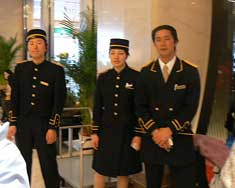 The Japanese greet each other with bows. Bows can be as simple as a nod of the head, or a deep bow. It all depends on the social status of the person you are greeting. For example, if you have to greet some important boss, you should try to make your bow a little deeper and last a little longer. Usually, most foreigners confine themselves to a slight tilt of the head, and the vast majority of Japanese do not expect foreigners to know the detailed rules of etiquette regarding bowing, so, without hurting your own pride, just nod your head. Bowing is also a way to thank and apologize. Handshakes are not accepted. Don't be the first to shake hands. Of course, you can shake hands if the Japanese himself wants to greet you in the usual way for you.
The Japanese greet each other with bows. Bows can be as simple as a nod of the head, or a deep bow. It all depends on the social status of the person you are greeting. For example, if you have to greet some important boss, you should try to make your bow a little deeper and last a little longer. Usually, most foreigners confine themselves to a slight tilt of the head, and the vast majority of Japanese do not expect foreigners to know the detailed rules of etiquette regarding bowing, so, without hurting your own pride, just nod your head. Bowing is also a way to thank and apologize. Handshakes are not accepted. Don't be the first to shake hands. Of course, you can shake hands if the Japanese himself wants to greet you in the usual way for you.
Shoes
 At Ueno Park, thousands of people gathered under cherry blossom trees for the Tokyo Cherry Blossom Festival. Places on the lawns under the trees were occupied in advance. Businesses, families, students, schoolchildren - all these people enjoyed the moment. But, even sitting on planted bags and bedding on the ground, the shoes are taken off. On the tatami one does not step in any shoes at all, even in house slippers. This is the hardest rule of all. For all their tolerance for the strangeness of foreigners, the Japanese will not make exceptions for you. Do not enter a Japanese house with shoes on. Street shoes are removed at the entrance. True, for our compatriots there is nothing strange in this - we do the same thing - but for Americans and Europeans it can be difficult to get used to it.
At Ueno Park, thousands of people gathered under cherry blossom trees for the Tokyo Cherry Blossom Festival. Places on the lawns under the trees were occupied in advance. Businesses, families, students, schoolchildren - all these people enjoyed the moment. But, even sitting on planted bags and bedding on the ground, the shoes are taken off. On the tatami one does not step in any shoes at all, even in house slippers. This is the hardest rule of all. For all their tolerance for the strangeness of foreigners, the Japanese will not make exceptions for you. Do not enter a Japanese house with shoes on. Street shoes are removed at the entrance. True, for our compatriots there is nothing strange in this - we do the same thing - but for Americans and Europeans it can be difficult to get used to it.
Give up a seat?
 In the subway, bus and train, no one gives up their seat to anyone - regardless of age and gender. Even if a grandmother enters the car, barely moving her legs, no one, of course, will move. If you still give up your seat out of pity, then it is quite possible that you will find yourself in a comical situation when this same grandmother, desperately working with her little hands and pushing passengers away, will follow you and will thank, thank and thank, as if you did something for her - something out of the ordinary. So if you take a seat on a Japanese bus or subway, then sit for yourself as long as you like, no matter what ancient old people surround you. Just be careful not to take a seat for the disabled, who are in the subway cars. No one can sit in these places, except for the elderly and the disabled. You can determine the place for the disabled by a special icon above the seat.
In the subway, bus and train, no one gives up their seat to anyone - regardless of age and gender. Even if a grandmother enters the car, barely moving her legs, no one, of course, will move. If you still give up your seat out of pity, then it is quite possible that you will find yourself in a comical situation when this same grandmother, desperately working with her little hands and pushing passengers away, will follow you and will thank, thank and thank, as if you did something for her - something out of the ordinary. So if you take a seat on a Japanese bus or subway, then sit for yourself as long as you like, no matter what ancient old people surround you. Just be careful not to take a seat for the disabled, who are in the subway cars. No one can sit in these places, except for the elderly and the disabled. You can determine the place for the disabled by a special icon above the seat.
Toilet and slippers
 Do not forget that in the toilet go in special slippers. These slippers are at the door to the toilet, where you take off the slippers in which you walk in the house and put on the slippers in which you go to the toilet. Take them off when you leave the toilet. Don't forget to take them off! Otherwise - although the difference will not be noticeable to you at all - you will appear in front of the surrounding Japanese in the role of the most ridiculously stupid foreigner. True, no one will scold you, but they will have fun at your expense from the heart.
Do not forget that in the toilet go in special slippers. These slippers are at the door to the toilet, where you take off the slippers in which you walk in the house and put on the slippers in which you go to the toilet. Take them off when you leave the toilet. Don't forget to take them off! Otherwise - although the difference will not be noticeable to you at all - you will appear in front of the surrounding Japanese in the role of the most ridiculously stupid foreigner. True, no one will scold you, but they will have fun at your expense from the heart.
The passion of the Japanese for cleanliness and sterility is known all over the world. However, the cult of cleanliness in public toilets took such forms that in modern Japan each toilet is more like a masterpiece of architecture and design than a latrine. Everything is convenient, perfect, thoughtful and free. The booths are crammed with electronic devices that minimize the contact of body parts with surrounding devices. Since the mid-80s, the country even has a National Toilet Association, whose main goal is to make the restroom a place "cozy for everyone." One way to achieve this is to convince people to remove their shoes and put on special slippers. Just like everyone in Japan does it at home. Indeed, today, special slippers bearing the "WC" emblem are displayed in front of many public toilets in Japan.
Handkerchief
Don't use a handkerchief. The Japanese use thin paper napkins, which we advise you to do, especially since these paper napkins are distributed free of charge at every intersection.


In general, it is better not to blow your nose in public at all. According to the rules of good manners, if you are overcome by a runny nose, you should sniff your nose until you are alone with yourself, and only then blow your nose. Just don't think it's a prank! The Japanese do exactly that. Out of habit, by the way, sniffing is very annoying, but in a foreign ...
Food sticks
 Don't stick chopsticks into food, don't use them to move a plate, don't pass anything "from chopsticks to chopsticks", and in general, two people should not touch the same piece of chopsticks at the same time. These rules must be strictly observed. In addition to the fact that the listed actions are bad form, it is also a bad omen (in fact, that is why they became bad form). For example, “from sticks to sticks” food is passed at a funeral. Another thing to note: Japanese dishes are often not just food, but small works of art, so treat them accordingly. Do not mix food with chopsticks and pour soy sauce on everything. This is not the worst crime against etiquette, but still ...
Don't stick chopsticks into food, don't use them to move a plate, don't pass anything "from chopsticks to chopsticks", and in general, two people should not touch the same piece of chopsticks at the same time. These rules must be strictly observed. In addition to the fact that the listed actions are bad form, it is also a bad omen (in fact, that is why they became bad form). For example, “from sticks to sticks” food is passed at a funeral. Another thing to note: Japanese dishes are often not just food, but small works of art, so treat them accordingly. Do not mix food with chopsticks and pour soy sauce on everything. This is not the worst crime against etiquette, but still ...
Don't touch the Japanese with your hands!
Don't touch the Japanese with your hands! Do not try to hug them when you meet, do not pat them on the shoulder, do not touch them at all. The only physical contact allowed is a handshake, and even then it is better to wait until the Japanese extend their hand to you. Otherwise, limit yourself to bows. The Japanese communicate with each other from a distance. Of course, this does not apply to family members or couples, but until you have such a close relationship with the Japanese, it is better to be restrained and respect other people's space.
Business Cards
Carry business cards with you. This, of course, primarily concerns those who are going to work in Japan, but in general it would be good for everyone to remember this. A business card handed to the right person at the right time can do wonders. If you do not have business cards with you, then for the Japanese it looks at least strange. As already mentioned, the use of business cards is not limited to the business community - often even students have them. When a business card is handed to you, you need to take it with both hands, study it, and only then hide it. Do not stuff it immediately into your pocket, as if you are deeply uninterested in what is written on it. And even more so, do not write anything on the business card that was handed to you.
Table etiquette
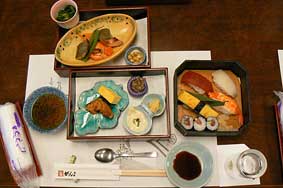 In everyday life, the Japanese wear European clothes that are familiar to us and, having lunch, they sit on the same chairs and at the same tables as we do, sometimes they go to McDonald's for a quick bite, sit for a cup of coffee in a coffee shop, drink dry glasses from glasses. red wine in French restaurants. European and american image lives securely registered in Japan. It is not sad, but the traditional way takes everything less space. Table etiquette is no exception.
In everyday life, the Japanese wear European clothes that are familiar to us and, having lunch, they sit on the same chairs and at the same tables as we do, sometimes they go to McDonald's for a quick bite, sit for a cup of coffee in a coffee shop, drink dry glasses from glasses. red wine in French restaurants. European and american image lives securely registered in Japan. It is not sad, but the traditional way takes everything less space. Table etiquette is no exception.
Table manners in Japan have changed significantly over the past one hundred and fifty years. It is very unlikely that a simple man who ended up in Japan Russian tourist will happen to get to a meal with some Japanese traditionalists who will expect purely Japanese behavior from a foreigner. Nevertheless, the observance of certain rules for eating causes a benevolent reaction among the Japanese. We bring to your attention quick guide about how to behave, since you are at an official reception.
Firstly, as you know, traditionally, the Japanese sit on the floor at a low table on a tatami while eating. There is a strict official posture ( seiza), when you need to straighten up to sit on your knees, tucking your legs under you. So they sit during ceremonies and at official receptions. In a more casual setting, sit in a relaxed posture ( agura). This is how classmates, colleagues or relatives sit, for example, during friendly feasts. It is worth noting that women in a relaxed position should not sit at all. For us, a long stay in the seiza position is very difficult - very soon you begin to think more not about how and what to do correctly, but about the fact that your legs are numb and painfully aching. The Japanese are well aware of this, so the hosts are likely to offer a foreign guest a small armrest in the form of a small bench.
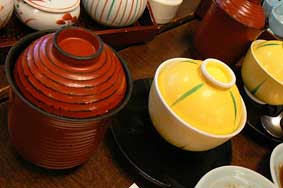 Once at some high-society event somewhere in Europe, once at the table, an ordinary person will be confused by the number of knives and forks and from not knowing which knife and fork should be used when the next dish is brought. At an official reception in Japanese before ordinary person exactly the same problems occur. The positive thing is that at the Japanese reception you don’t have to worry about knives and forks - you only have to use chopsticks ( hashi). The main difficulty is that in Japanese table etiquette, each dish has its own place. All dishes are served separately to each on a tray. All small plates of food are placed on the right, deep ones on the left, rice and soup are closer to the diner, snacks are at the far end of the tray. A modest dinner party consists of 5 courses. Rice, soup, 3-4 courses with snacks. Formal gala dinners are full-course meals, including rice, two soups, 7-10 appetizers, 2-3 desserts and tea.
Once at some high-society event somewhere in Europe, once at the table, an ordinary person will be confused by the number of knives and forks and from not knowing which knife and fork should be used when the next dish is brought. At an official reception in Japanese before ordinary person exactly the same problems occur. The positive thing is that at the Japanese reception you don’t have to worry about knives and forks - you only have to use chopsticks ( hashi). The main difficulty is that in Japanese table etiquette, each dish has its own place. All dishes are served separately to each on a tray. All small plates of food are placed on the right, deep ones on the left, rice and soup are closer to the diner, snacks are at the far end of the tray. A modest dinner party consists of 5 courses. Rice, soup, 3-4 courses with snacks. Formal gala dinners are full-course meals, including rice, two soups, 7-10 appetizers, 2-3 desserts and tea.
Now about sticks. Unaccustomed to using chopsticks is not easy. The sticks are placed on a tray on the right on a special stand ( hasioki). We have already written about how to use chopsticks. We draw your attention to several taboos, which we advise you to follow. First, do not use sticks as a pointer, do not draw with them on the table (this prohibition is called mayobashi- dancing sticks). Secondly, you can’t put back a piece of an already taken dish and pick up another one, don’t poke around in search of a better piece, if you already took something, eat (prohibition saguribashi- poking sticks). Thirdly, never prick food on chopsticks (prohibition sashibashi- prick sticks). Fourth, never stick chopsticks into rice - this is how they put a bowl of rice and chopsticks stuck into rice at a wake, just like at our wake they pour a glass of vodka with a piece of black bread, and if someone sticks chopsticks into rice while eating - the Japanese are gloomy, they sincerely believe that this is for the dead (prohibition tatebashi- protruding sticks).
 Before the start of the meal, an oshibori is served - a hot, damp towel, they wipe their face and hands. Meals begin with the word "Itadakimas!" and bow slightly, this is said by everyone who sits at the table and takes part in the meal. This word has many meanings, in this case it means: "I'm starting to eat with your permission!". The first to start the meal is the host or the one who, say, invites you to a restaurant. As a rule, soup and rice are served first. Rice is generally served with all dishes. If you need to rearrange cups or plates yourself, use both hands to rearrange them.
Before the start of the meal, an oshibori is served - a hot, damp towel, they wipe their face and hands. Meals begin with the word "Itadakimas!" and bow slightly, this is said by everyone who sits at the table and takes part in the meal. This word has many meanings, in this case it means: "I'm starting to eat with your permission!". The first to start the meal is the host or the one who, say, invites you to a restaurant. As a rule, soup and rice are served first. Rice is generally served with all dishes. If you need to rearrange cups or plates yourself, use both hands to rearrange them.
Traditionally, food is always started with rice, even if it is a small lump of rice, but, nevertheless ... Soup is always drunk from a bowl, and what cannot be drunk is taken with chopsticks. On this, in fact, the main ritual features end. Further, during lunch, you can take and try everything you want and in any order. However, we recommend not to do something while eating, which, according to our Russian ideas, is uncivilized and impolite: do not bite off a large piece, lick chopsticks and cups, do not try to constantly clink glasses and say long toasts of the Caucasian type - the Japanese raise one toast at the beginning of the feast with the word "Kampai!" (“To the bottom!”), it is not customary to pour water into your own glass from a bottle, your neighbors will take care of this, but you should watch how the glasses of those with whom you drink are emptied and pour into them.
While eating, you can use several conventional signs. Sticks, if they are not used, are placed on the hasioki stand. If rice is left in the bowl, this means that the food has not been finished, a clean bowl is a signal that you have finished the meal and tea will be served to you. Generally speaking, it is indecent to leave rice in a bowl; according to Russian concepts, this is the same as throwing bread away. At the end of the meal, the chopsticks are placed on a tray and again with a slight bow, they say: “Gochiso-sama desu!”, Which means “Thank you for the treat!”
Visiting temples
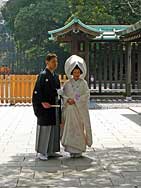 There are two main religions in Japan: Shinto and Buddhism. Therefore, temples are either Buddhist or Shinto. From point of view ordinary tourist temples are even outwardly difficult to distinguish. A very common point of view is that the Japanese do not have any particular religion, however, the majority of the Japanese still follow Buddhist and Shinto customs and participate in rituals.
There are two main religions in Japan: Shinto and Buddhism. Therefore, temples are either Buddhist or Shinto. From point of view ordinary tourist temples are even outwardly difficult to distinguish. A very common point of view is that the Japanese do not have any particular religion, however, the majority of the Japanese still follow Buddhist and Shinto customs and participate in rituals.
For example, most of wedding ceremonies are held according to the Shinto ritual, while funerals are held in accordance with Buddhist customs. Japan's original religion is, of course, Shinto. It originates from ancient history and myths. People believed in the existence of natural spiritual forces ( kami) - in the trees and in the mountains, in the sea and in the wind. With the development of Shintoism, the souls of dead heroes and other respected people began to be attributed to kami. Before the first ones were built Shinto shrines, people to honor the kami went to places located in the bosom of nature.
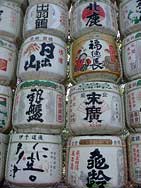
 So, once in the temple, behave calmly and with dignity. It is recommended to show respect for the sacred place for the Japanese. In some temples, incense is smoked in large braziers. You can buy a small bundle of incense sticks, light them, let them burn for a few seconds, put out the flame with a wave of your hand, and set the smoking sticks in the brazier. Traditionally, the Japanese direct several puffs of incense smoke at themselves - it is believed that the smoke of temple incense heals. If there is an opportunity and desire to enter the temple, you need to take off your shoes and leave them on the shelf at the entrance or take them with you in a plastic bag. Some temples provide slippers. Take care of the cleanliness and freshness of your socks.
So, once in the temple, behave calmly and with dignity. It is recommended to show respect for the sacred place for the Japanese. In some temples, incense is smoked in large braziers. You can buy a small bundle of incense sticks, light them, let them burn for a few seconds, put out the flame with a wave of your hand, and set the smoking sticks in the brazier. Traditionally, the Japanese direct several puffs of incense smoke at themselves - it is believed that the smoke of temple incense heals. If there is an opportunity and desire to enter the temple, you need to take off your shoes and leave them on the shelf at the entrance or take them with you in a plastic bag. Some temples provide slippers. Take care of the cleanliness and freshness of your socks.
Usually photography and video filming is allowed in temples. Some temples have rooms where it is forbidden to enter. Pay attention to prohibition signs. It is not recommended to visit the temples of the sick, with open wounds and in mourning. According to Japanese ideas, all these are manifestations of impurity. All Japanese temples have cleansing springs. For ablution, special ladles are used ( hisyaku). With a ladle, they scoop up water from the source and alternately pour it on their hands, they also need to wash their face and mouth. You can’t take water into your mouth directly from the ladle, pour water from the ladle into a handful and take water into your mouth from your palm. Water is not swallowed, but spit out, but not back into the source.


There are places in the temples where visitors make some kind of request to the deities. To attract the attention of Japanese deities, you need to do the following. In places where the kami is addressed, there is usually a box where you need to throw a coin, then bow twice and clap your hands twice. In conclusion, you need to bow again, during which for a few seconds you can ask for some cherished desire to come true. If you do everything right, then it is quite possible that the Japanese gods will hear you ...
Observance of traditions is the most important feature of the Japanese people. They vividly express their attitude to life, their customs and rules, their worldview. The traditions of the Japanese people have been carefully honored for centuries and are embodied in all spheres of life. Despite the dynamic development of their society, the Japanese find support in constancy and following the traditions of the past. In everything they see a meaning that is rooted in the history of the nation. What is only the traditional Japanese tea party, or hanami - a holiday during which everyone takes to the streets in order to watch the cherry blossoms.
Sakura is to whom poems and songs are dedicated, and the traditions of the Japanese people are strongly associated with it. Every year, meteorologists report to the whole country about this important event - cherry blossoms. IN central park Tokyo Shinjuku, in the presence of the imperial couple and important political figures, the opening of the hanami festival takes place. Since the sakura blooms for a very short time, everyone tries to go out and admire its flowers, because the slightest breeze can blow away these airy and delicate creations of nature. Followers of Buddhism consider sakura flowers a symbol of the impermanence of being.
The traditions of the Japanese are closely connected with previous generations, their image and way of life. The tea drinking ceremony has remained unchanged for centuries, which is a whole ritual strictly performed by all its participants. It embodied such features of the Japanese as strict observance of the rules, reading the laws, respect for elders, and so on. Tea drinking for them is not just spending time associated with drinking their favorite drink, it is also receiving. Before tea drinking, guests are first treated to a host entertains them interesting stories trying to make the pastime enjoyable and relaxed. Then everyone moves on to the tea drinking process itself.
Japanese customs and traditions are quite strongly expressed in the tea ceremony. Here everything is scheduled in advance, and each participant follows the rules established for centuries. First, thick tea is served, which is poured by the youngest participant, then liquid tea is served, followed by trays of cakes. The ritual is performed with all respect for the participants in the ceremony and the traditions of the ancestors. Forms of tea drinking exist in Japan a large number of, and some of them, such as night, morning or afternoon tea, are held in a strictly established order.
The traditions of the Japanese people are expressed in everything: in the interior, literary language and theater. The number of rituals is huge and applies to almost all spheres of life of the people of Japan. Japanese hospitality is known all over the world. Their smile became their calling card. But I must say that the Japanese do not perceive any familiarity and familiarity at all. It is traditionally considered unacceptable to look them directly in the eyes, this is perceived as a challenge or a manifestation of aggression.
The very process of eating is also permeated with many echoes of the traditions of past centuries. Napkin "Osobori" is an essential attribute, without which not a single meal can do. Hashi sticks also require traditional and careful handling. They cannot be gesticulated, in no case should they be stuck into food, crossed. "By crossing wands, you can bring death to the owner," - this is how the traditions of the Japanese people say. Passing food with chopsticks is strictly prohibited, because according to Buddhist belief, this resembles the burial rite of the deceased.
Traditional for Japan are origami - a crane and a paper lantern. The ability to fold paper figures is considered a good manners and a sign good manners. Another distinguishing feature of the Japanese, which characterizes their adherence to the traditions of antiquity, is strict adherence to the rules and regulations. The Japanese will never violate the established restrictions, for example, in terms of time. they are also located in certain areas, and this is primordially national tradition. In Japan, you can feel safe everywhere - this is a hallmark of the wonderful people of the Land of the Rising Sun.
Japan is amazing country. Anyone who comes here for the first time plunges into the metropolis and hectic life, on the one hand, and calm, peace on the other.
tea culture
The traditions and customs of Japan are very different from similar phenomena in other countries, and the people themselves are different. One of these customs is the tea ceremony, or chanoyu. For the Japanese, it is very important and even painted on specific steps. Not only two people can take part in it, the main thing is to observe all the prescribed stages of tea drinking. The tea master is in charge of this ritual. He brews and pours the drink into cups. This ritual is closely related to the laws of Zen Buddhism and is widely popular throughout the country. The Japanese are very fond of and observe all the canons of it in order to obtain moral satisfaction and pleasure.
You can hold the ceremony on any day, but there are also serious reasons for holding it. Japanese tea traditions include:
- Invitation - when the host calls guests or sends a postcard.
- Thanksgiving - a few days before the ceremony, the guests thank the inviter.
- Tea ritual - those invited come fifteen or twenty minutes before the right time, gather in a special room and elect the main (honorary) guest. It is called shokaku. This guest can be a person with high social status or the oldest of all. Japan is very fond of the tradition of tea ceremonies. Further, the second, third, fourth and so on are determined. According to the queue assigned to them, the invitees wash their hands, enter the room and sit down. Before this, the obligatory stage is kaiseki. We would call it a buffet. This is such a treat for guests before the ceremony, and it can be varied. Starting from soups, ending with potatoes or fish. At the same time, the owner always tells something interesting, since the guests should like everything. The treat is accompanied by a portion of sake. That country is Japan. Its traditions are very unpredictable. The tea party itself begins with the arrangement of cups. Thick tea - the first stage. The host prepares a drink in a large cup, and the guests pass it around, drinking a little. It evokes bonding and intimacy. A prerequisite for this process is the praise of the cup by each guest. Next comes the turn of liquid tea. At the same time, cakes are brought into the room. There are a lot of tea drinking ceremonies, only some of them are strict.
Examples of tea rituals
This is Japan. Traditions have been established for a long time. Here are some examples of tea ceremonies:
- Night - this ceremony begins with the moon around 23:30. Guests must leave the house no later than four in the morning. Powdered tea is brewed and served from crushed tea leaves. It can be drunk only after a meal, so guests are treated to dishes before tea drinking.
- Rising Sun - held around 4 am, guests stay until 6:00.
- Evening - beginning around six o'clock in the evening.
- Morning - at six o'clock in the morning, especially popular in the heat.
- Afternoon - in the afternoon, accompanied by the serving of cakes.
- Special - guests gather about. It can be both a holiday and a simple meeting, as well as a change of season.

According to the Japanese, such rituals educate a person. Make it natural, neat, simple and sociable. This is true, but there is another subtext to all this. The ceremony accustoms people to order, diligence, observance of social rules. This is the basis of the education of national feelings.
Japan: Dressing Traditions
The Japanese have their own national dress. It's called Wafuku. We are used to using the word "kimono", but this is not correct. Kimono means all clothing in general. Here and yukata (robe), hakama (pants), obi (belt) and so on. Sandals have two names - geta or waraji.  The Japanese do not wear national clothes in everyday life, they have long since switched to European ones.
The Japanese do not wear national clothes in everyday life, they have long since switched to European ones.
Japan: traditions of etiquette
In the Land of the Rising Sun, all people are divided into social classes. This is manifested in their behavior and even in the manner of communication. Duty and obligation are central to the Japanese, they are taken very seriously and are called giri. In the case of young people, this is not so important, they are less attached to these concepts.
Gesticulation is also not very welcome in Japan. The more modest and quiet a person is, the better and more respectful the attitude of others towards him. The Japanese do not like to be touched, tugged on the arm, or tapped on the shoulder. This can easily offend a person.
When greeting, a slight bow will suffice. By the way, bows accompany the whole life of these people.
Theater and music
The theater appeared a very long time ago and was very fond of the Japanese. They wore masks and fancy clothes. Kabuki appeared in the 17th century. This is the most famous theater in Japan. A very complex, but beautiful make-up is applied to the face of the actor. Onnagata were considered the most revered. These are theater actors who played female roles. Now women are also allowed to participate in productions. Kabuki use drums, zither, oboe, flute in their productions. Also famous is the bunraku theater. This puppet show. At first, plays were written for small theaters, then they were played in large ones. But there are also those who were taken from real life, for example, "Forty-seven Samurai", or ronin. No one knows for sure how things really were, but it is historical fact, which is played on the stage of many theaters. 
The culture and traditions of Japan are also reflected in music. But they are not very popular now. Pop is common these days. Local bands are getting more and more popular every day.
Literature and aesthetics
The original Japanese language is called hiragana. A lot of everything from the early days was written in this language and by women. Do you know why? Previously, women were forbidden to study. Men wrote in hieroglyphs, which were copied from Chinese writing. The most famous authors are Murasaki Shikibu, Matsuo Bashō, Yuko Mishima and Murakami Rui. All of them gave a piece of their soul to literature. Matsuo Bashō, for example, perfected haiku in the 17th century, and Murasaki Shikibu wrote one of Japan's most famous tales of Japanese court intrigue. Aesthetics found reflection in architecture. There's a lot here beautiful temples and shrines, castles and so on. It is impossible to see enough of Buddha temples. And to hide in the castle, where centuries-old walls protect from the heat, is simply wonderful. Just look at Japanese gardens. How beautiful they are, and only because plants are treated like a living being. Sakura is considered the national symbol of the country. This is the culture and traditions of Japan. People there are very fond of cleanliness and order and live by the principle: "Do not litter where you live."
Food
Do you know why you can visit Japan? Yes, at least for the food. Japanese food is becoming more and more popular in Europe and other countries. Arriving in this country, you will understand that you can eat there not only sushi, tempura and sukiyaki. By the way, this is a common misconception. cultural traditions Japan, in terms of food, is so wide that, if you understand, it will take many years. We will tell you briefly. 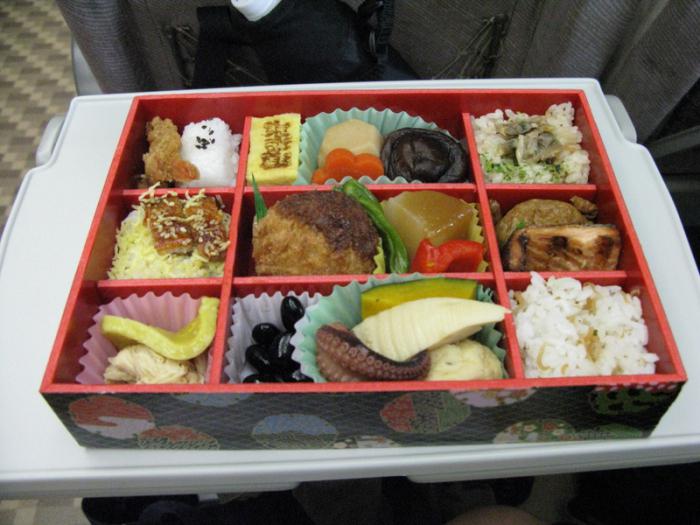
In many restaurants, with the exception of canteens called shokudos and izakaya pubs, you can choose your own dish. That is, you can choose what will be included in its composition. Mostly order meat, seafood or their mixture and vegetables. All this together or separately baked in cabbage leaves.  There are other types of restaurants specializing in charcoal cooking. They buy charcoal and delight their guests with beautiful culinary delights. There are, of course, fast food chains called shokudo. They give a standard set of food in the hall or "to go". It's pretty cheap and fast.
There are other types of restaurants specializing in charcoal cooking. They buy charcoal and delight their guests with beautiful culinary delights. There are, of course, fast food chains called shokudo. They give a standard set of food in the hall or "to go". It's pretty cheap and fast.
Alcohol
The traditions and customs of Japan, as you have already understood, are closely connected with alcoholic beverages. The Japanese favorite drink is beer. They drink it everywhere: in bars, restaurants, at home, at work and even in temples. Nothing stops modern man before craving this drink. You can buy it everywhere, whether it's a vending machine or a supermarket. In fact, alcohol is what holds society together. Everyone drinks alcohol here: men, women and even most teenagers. Sake is another favorite drink. Some say it's rice wine, others call it rice vodka. Sake is consumed warm or cold, but always with a warm snack. You need to drink it very carefully, as a hangover after a "bust" is simply unforgettable. By the way, as we mentioned earlier, the country is also known for its green tea, which is great for fighting hangovers, contains a large amount of vitamin C, as well as caffeine. The ancient traditions of Japan for drinking tea will help you a lot, as this drink refreshes and energizes the body.



